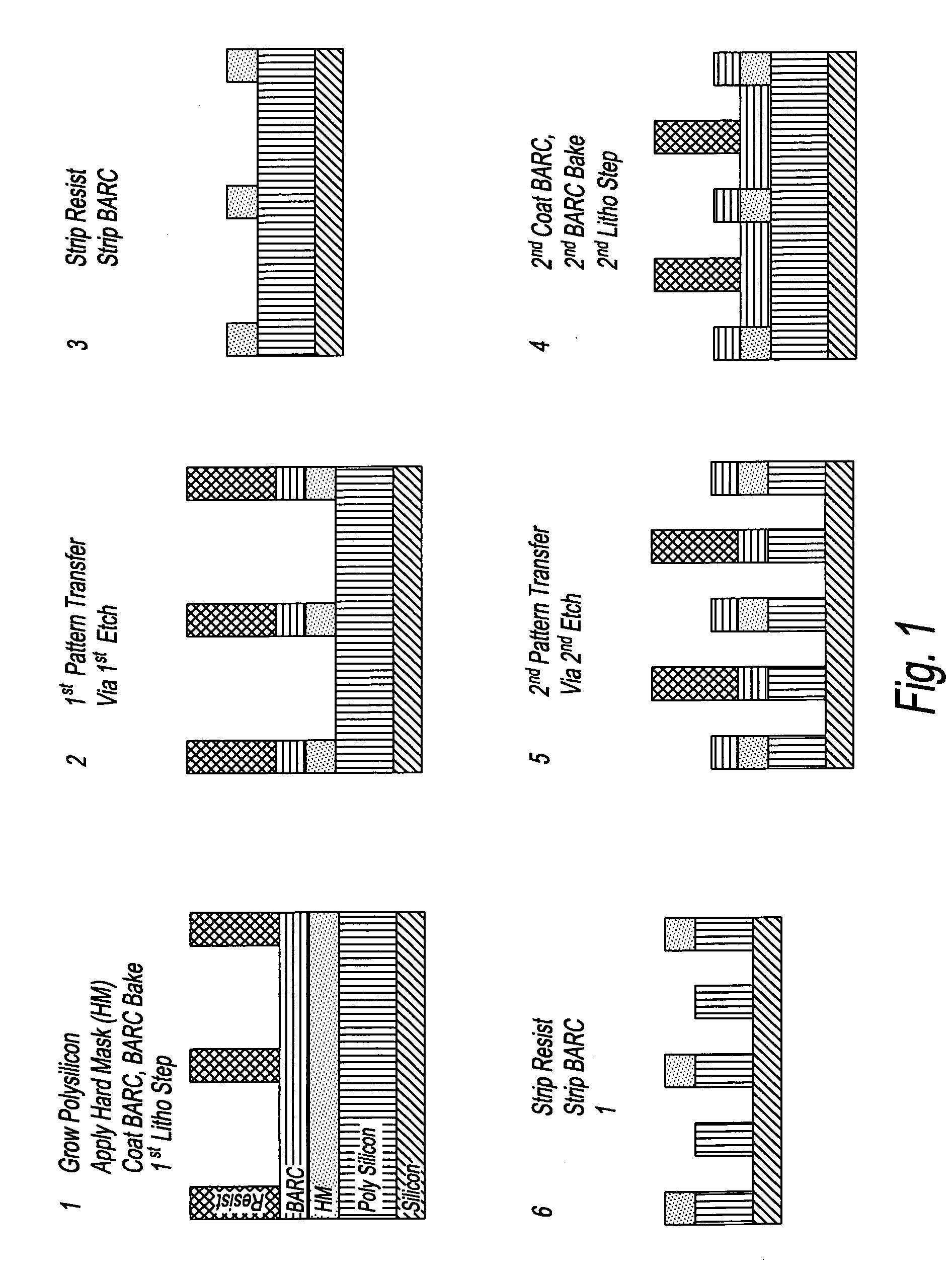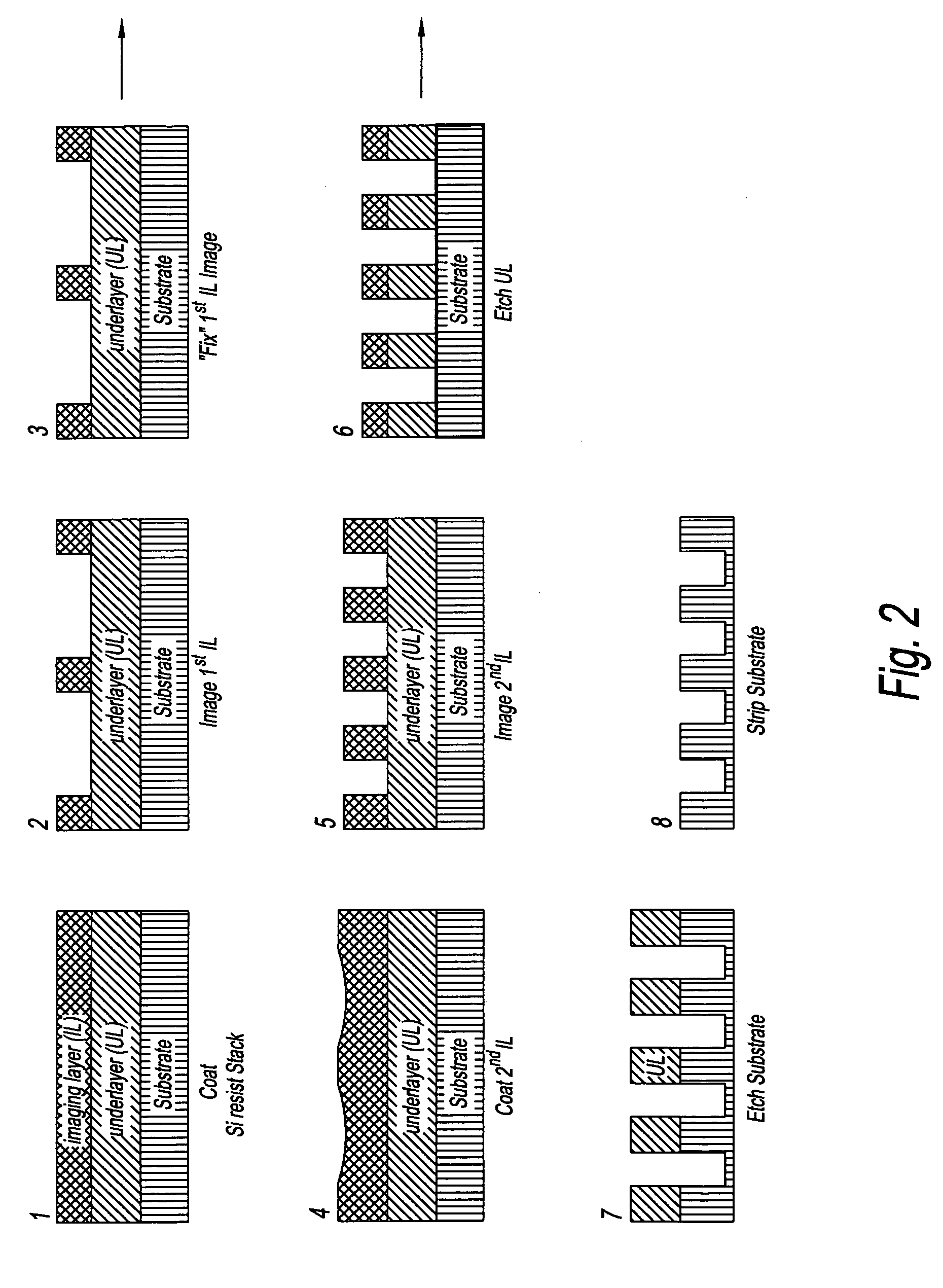Device manufacturing process utilizing a double patterning process
a technology of patterning and device manufacturing, applied in the direction of photomechanical treatment, instruments, electrical equipment, etc., can solve the problems of 40 watt output power, slow method to reach the market, impractical production use,
- Summary
- Abstract
- Description
- Claims
- Application Information
AI Technical Summary
Benefits of technology
Problems solved by technology
Method used
Image
Examples
formulation example 1
Fixer Formulation Example 1
Image Fixing Solution
[0203]An image fixing solution was prepared consisting of 4 parts by weight of hexamethylenediamine, 69 parts by weight of decane, and 27 parts by weight of 2-octanol. The components were mixed in an amber glass bottle, which was rolled for 24 hours during the mixing process.
process example 1
Lithographic Process Example 1
[0204]TIS 248UL-01-50 underlayer available from FUJIFILM Electronic Materials U.S.A., Inc., was applied to a 200 mm silicon wafer and spun coated using a DNS 80B coating track, to achieve a film thickness on 500 nm after baking for 200° C. for 70 seconds, using an inline bake plate configured within the DNS 80B. TIS 248IL-01-23 imaging layer photoresist, a chemically amplified, silicon and anhydride containing resist available from FUJIFILM Electronic Materials U.S.A., Inc., was applied onto the underlayer, using the DNS 80B coating track, to achieve a film thickness of 239 nm after baking for 125° C. for 90 seconds. The wafer, having a film stack of underlayer and photoresist, was irradiated through a binary mask containing line space patterns, with a focus exposure matrix using a Canon EX6 248 nm stepper. The stepper illumination settings included a numerical aperture of 0.65, with an annular setting having an outer sigma of 0.80 and an inner sigma of...
process example 112
Lithographic Process Example 112
[0267]In this example, double patterning is demonstrated using a bottom anti-reflective coating (ARC) in combination with a non-silicon containing resist. The first image is patterned using General Lithographic Procedure 2 with the following exceptions. In the first exception, the UL is replaced with a BARC (ARC29A; supplied by Brewer Science, Inc.) and is coated to a 90 nm film thickness. In the second exception, a resist comprising a non-silicon containing polymer with incorporated anhydride functionality as described in U.S. Pat. No. 5,843,624, is used as a substitute for the imaging layer. The resulting image is fixed using the puddle process (PP) employing Fixer Formulation 62. The fixing procedure also uses a 30 second rinse-before-bake (RBB) process and a 175° C. post-fix bake temperature with duration of 90 seconds and. The resulting stack is then subjected to the General Lithographic Procedure 4 in which a resist comprising a non-silicon cont...
PUM
 Login to View More
Login to View More Abstract
Description
Claims
Application Information
 Login to View More
Login to View More - R&D
- Intellectual Property
- Life Sciences
- Materials
- Tech Scout
- Unparalleled Data Quality
- Higher Quality Content
- 60% Fewer Hallucinations
Browse by: Latest US Patents, China's latest patents, Technical Efficacy Thesaurus, Application Domain, Technology Topic, Popular Technical Reports.
© 2025 PatSnap. All rights reserved.Legal|Privacy policy|Modern Slavery Act Transparency Statement|Sitemap|About US| Contact US: help@patsnap.com



